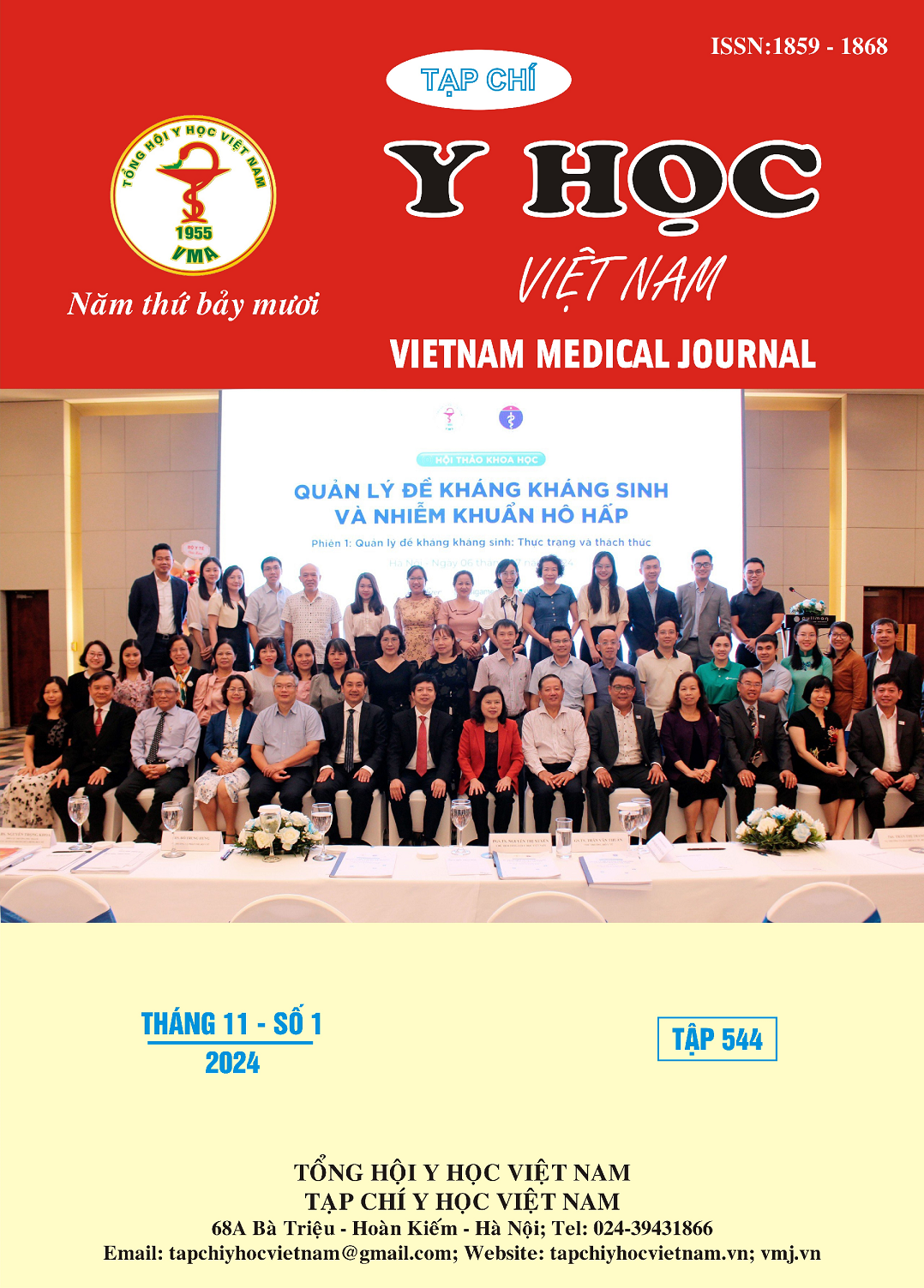ĐÁNH GIÁ KẾT QUẢ MỞ KHÍ QUẢN Ở TRẺ EM QUA TỔNG QUAN LUẬN ĐIỂM CÁC NGHIÊN CỨU TỪ NĂM 2014-2023
Nội dung chính của bài viết
Tóm tắt
Mục tiêu: Mô tả các đặc điểm các nghiên cứu vể mở khí quản ở trẻ em từ năm 2014 đến năm 2023, từ đó đánh giá được hiệu quả và các biến chứng xảy ra ở các phương pháp mở khí quản trên nhóm đối tượng này. Phương pháp: Việc tìm kiếm được thực hiện đối với các bài báo trên Tạp chí Sức khỏe và cơ sở dữ liệu PubMed, lựa chọn các bài báo ngôn ngữ tiếng Anh hoặc tiếng Việt được xuất bản từ năm 2014 đến năm 2023, ở nhóm đối tượng bệnh nhân dưới 16 tuổi được mở khí quản. Kết quả: 194 bài viết được tìm thấy, trong đó có 29 bài được đưa vào tổng quan này. Mở khí quản ở trẻ em là thủ thuật thường gặp ở các khoa cấp cứu do thở máy kéo dài(46,2%), tắc nghẽn được hô hấp trên (28,1%), bệnh lý thần kinh cơ gặp 20,3%, chấn thương sọ não 19,9% và suy hô hấp 14,2%. Các nghiên cứu được tập trung ở châu Á 24,1%, châu Mỹ 58,6%, châu Âu 17,3%. Tuổi thường gặp cần mở khí quản thường dưới 1 tuổi. Nguyên nhân gây tắc nghẽn đường hô hấp trên: Hẹp dưới thanh môn 15,0%; Nhuyễn thanh – khí quản 9,1%; Tắc nghẽn hô hấp bẩm sinh 8,7%; Dị tật sọ mặt 8,1%; Liệt dây thanh 2 bên 7,7%; Chấn thương hàm mặt 6,1%. U đường thở 3,2%. Mối liên quan chặt chẽ giữa tuổi và nguyên nhân: dưới 12 tháng: viêm thanh quản phù nề hạ thanh môn, dị tật thanh quản hay gặp nhất, từ trên 12 tuổi đến dưới 6 tuổi: dị vật đường thở, u nhú thanh quản, từ trên 6 tuổi đến 16 tuổi hay gặp do chấn thương thanh quản, dị vật, bỏng, uốn ván…. Biến chứng sớm hay gặp nhất là chảy máu sau thủ thuật chiếm 14,5%; tụt canuyl 7,3%; nhiễm trùng tại chỗ với 6,6%, tràn khí màng phổi 4,3%. Biến chứng muộn thường gặp nhất là rò khí quản với 16,5%, u hạt 11,3%; tắc canuyl 5,3% và hẹp khí quản gặp 5,0%. Kết luận: Nguyên nhân mở khí quản thưởng gặp nhất ở trẻ em dưới 12 tháng là viêm thanh quản phù nề hạ thanh môn, trên 12 tháng đến dưới 6 tuổi chủ yếu là dị vật, trên 6 đến 16 là chấn thương. Thường sử dụng đường rạch dọc trong cấp cứu và thường mở khí quản trung bình.
Chi tiết bài viết
Từ khóa
: Mở khí quản, trẻ em, chỉ định, phương pháp, biến chứng.
Tài liệu tham khảo
2. Ghiani, A., K. Tsitouras, J. Paderewska, et al. Incidence, causes, and predictors of unsuccessful decannulation following prolonged weaning. Ther Adv Chronic Dis.2022; 13: Tr. 20406223221109655.
3. Khaja, M., A. Haider, A. Alapati, et al. Percutaneous Tracheostomy: A Bedside Procedure. Cureus.2022; 14(4): Tr. e24083.
4. de Araujo, O.R., R.T. Azevedo, F.R.C. de Oliveira, et al. Tracheostomy practices in children on mechanical ventilation: a systematic review and meta-analysis. J Pediatr (Rio J).2022; 98(2): Tr. 126-135.
5. Syed, K.A., P. Naina, A. Pokharel, et al. Paediatric tracheostomy: A modified technique and its outcomes, results from a South Indian tertiary care. International Journal of Pediatric Otorhinolaryngology.2019; 118: Tr. 6-10.
6. Watters, K., M. O'Neill, H. Zhu, et al. Two-year mortality, complications, and healthcare use in children with medicaid following tracheostomy. The Laryngoscope.2016; 126(11): Tr. 2611-2617.
7. García-Urabayen, D., Y.M. López-Fernández, J. Pilar-Orive, et al. Analysis of tracheostomies in a Paediatric Intensive Care Unit during the period 2003–2013. Anales de Pediatría (English Edition).2016; 84(1): Tr. 18-23.
8. Ha, T.-A., M. Goyal, and J. Ongkasuwan. Duration of tracheostomy dependence and development of tracheocutaneous fistula in children. The Laryngoscope.2017; 127(12): Tr. 2709-2712.


